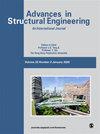用于钢丝刷恒力机器人打磨的自适应电动气动末端执行器
IF 2
4区 工程技术
引用次数: 0
摘要
本文介绍了一种机器人末端效应器的设计,它可以在不精确测量工件几何数据的情况下,使用毛刷工具对曲面进行恒力打磨。它利用双向气缸和弹簧创建了一个力平衡系统,作为控制打磨刷的附加伺服自由度。该系统采用阻抗控制方法,建立了完整的电动气动模型,并使用 PID 控制器通过调节气动压力来控制接触力,以保持表面恒定的磨削力。测试结果表明,该系统能有效完成除锈和除漆任务。在除漆方面,通过使用图像处理软件进行测量,证明除漆率达到 99.3%,而在除锈方面,结果也达到了类似的水平,但可靠和可量化的测量方法仍在研究之中。该末端效应器可安装在大多数通用打磨机器人上,具有潜在的应用价值。本文章由计算机程序翻译,如有差异,请以英文原文为准。
An adaptive electropneumatic end effector for constant force robot grinding with steel wire brush
This article introduces the design of a robot end effector, which can perform constant force grinding on a curved surface using a brush tool without accurately measuring the geometric data of the workpiece. It uses a bidirectional cylinder and spring to create a force balance system as an additional servo degree of freedom to control the grinding brush. The system adopts impedance control method, establishes a complete electric pneumatic model, and uses PID controller to control contact force by adjusting pneumatic pressure to maintain a constant grinding force on the surface. The test results indicate that the system can perform effective rust and paint removal tasks. For paint removal, the removal rate has been proven to be 99.3% through measurement using image processing software, while for rust removal, the results are at a similar level but reliable and quantifiable measurement methods are still being studied. The end effector can be installed on most general-purpose robots for grinding and has potential application value.
求助全文
通过发布文献求助,成功后即可免费获取论文全文。
去求助
来源期刊

Advances in Mechanical Engineering
Engineering-Mechanical Engineering
自引率
4.80%
发文量
353
期刊介绍:
Advances in Mechanical Engineering (AIME) is a JCR Ranked, peer-reviewed, open access journal which publishes a wide range of original research and review articles. The journal Editorial Board welcomes manuscripts in both fundamental and applied research areas, and encourages submissions which contribute novel and innovative insights to the field of mechanical engineering
 求助内容:
求助内容: 应助结果提醒方式:
应助结果提醒方式:


